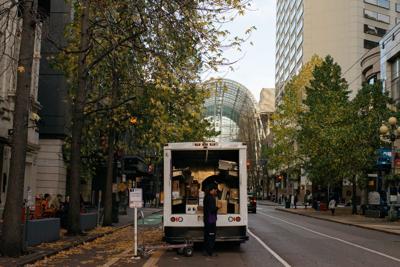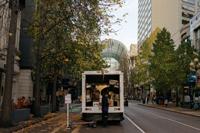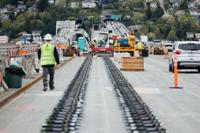(The Center Square) – It’s been four years since the COVID-19 pandemic forced employees to work from home, and yet downtown Seattle is still seeing less than 60% of pre-pandemic worker foot traffic. Nevertheless, some Seattle organizations are optimistic about the city's future.
The Downtown Seattle Association tracks the area’s monthly worker foot traffic, hotel demand, occupied apartments, and visitors and compared it to the same time period in 2019. According to its latest data, the downtown area averaged more than 87,000 daily workers in March. The association notes that is the highest daily average for worker foot traffic since February 2020 and represents a 14% increase from March 2023. However, it is still 52% of the daily foot traffic seen in March 2019.
The Center Square reached out to the DSA prior to the March data being released to the public when the average worker traffic was 85,158 in February. Kelly Akers, DSA communications specialist, told The Center Square in an email that the association is “optimistic that the return-to-office numbers will steadily increase and visitor numbers will remain strong, especially as we enter the busy tourist season.”
The Seattle Metropolitan Chamber of Commerce share's DSA's optimistic outlook. However, the chamber notes that there are warning signs that the city should not ignore. This includes tax revenues generated by retail sales and business and occupation taxes being down in 2023, according to a recent Seattle revenue forecast.
“The recent city of Seattle revenue forecast showed that even though the general fund will be $44.7 million higher than budgeted in 2024, [business and occupation], retail sales and other tax revenues that are indicators of a healthy retail market were all down – and we can see it ourselves: three of four corners on Pike and Fourth are empty,” Seattle Metropolitan Chamber of Commerce CEO Rachel Smith emailed The Center Square. “But we have the roadmap on how to change this dynamic and voters are clear on what they want to see to visit downtown more often: reductions in crime, enhanced shopping and dining opportunities and greater effort in addressing homelessness.”
According to the chamber’s Index survey, 89% of respondents agreed that downtown Seattle is critical to the region’s economy, with 88% agreeing that the area cannot fully recover until the city’s homelessness and public safety issues are addressed.
Seattle Mayor Bruce Harrell has already proposed legislation intended to make downtown Seattle more residential, as part of his Downtown Activation Plan.
According to the Downtown Seattle Association’s data, the number of occupied apartment units was more than 57,000 in March. This represented a 2.5% increase in occupied units compared to the second quarter of 2023 and a 16.5% increase compared to the second quarter of 2019.









